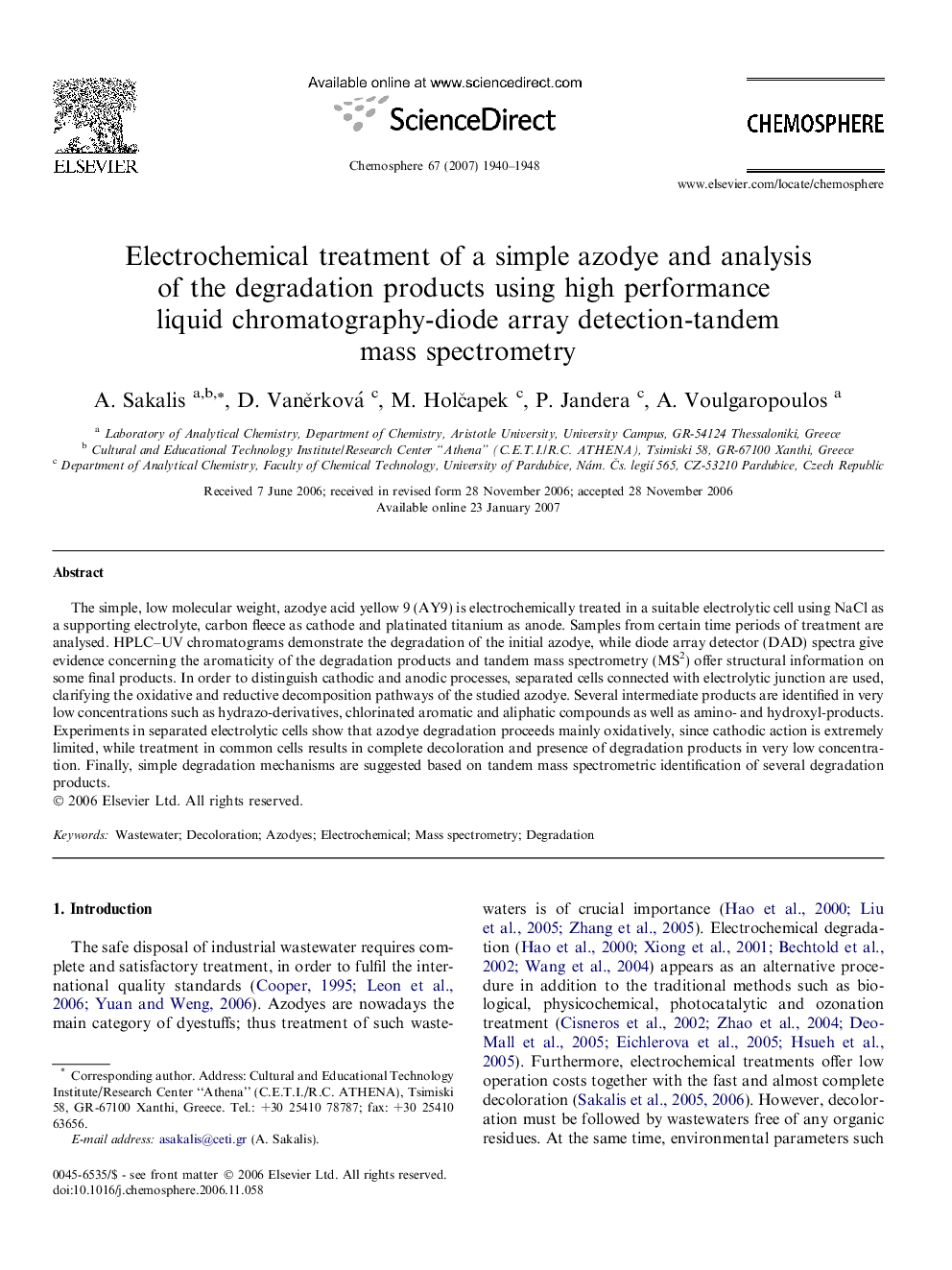| Article ID | Journal | Published Year | Pages | File Type |
|---|---|---|---|---|
| 4414927 | Chemosphere | 2007 | 9 Pages |
The simple, low molecular weight, azodye acid yellow 9 (AY9) is electrochemically treated in a suitable electrolytic cell using NaCl as a supporting electrolyte, carbon fleece as cathode and platinated titanium as anode. Samples from certain time periods of treatment are analysed. HPLC–UV chromatograms demonstrate the degradation of the initial azodye, while diode array detector (DAD) spectra give evidence concerning the aromaticity of the degradation products and tandem mass spectrometry (MS2) offer structural information on some final products. In order to distinguish cathodic and anodic processes, separated cells connected with electrolytic junction are used, clarifying the oxidative and reductive decomposition pathways of the studied azodye. Several intermediate products are identified in very low concentrations such as hydrazo-derivatives, chlorinated aromatic and aliphatic compounds as well as amino- and hydroxyl-products. Experiments in separated electrolytic cells show that azodye degradation proceeds mainly oxidatively, since cathodic action is extremely limited, while treatment in common cells results in complete decoloration and presence of degradation products in very low concentration. Finally, simple degradation mechanisms are suggested based on tandem mass spectrometric identification of several degradation products.
